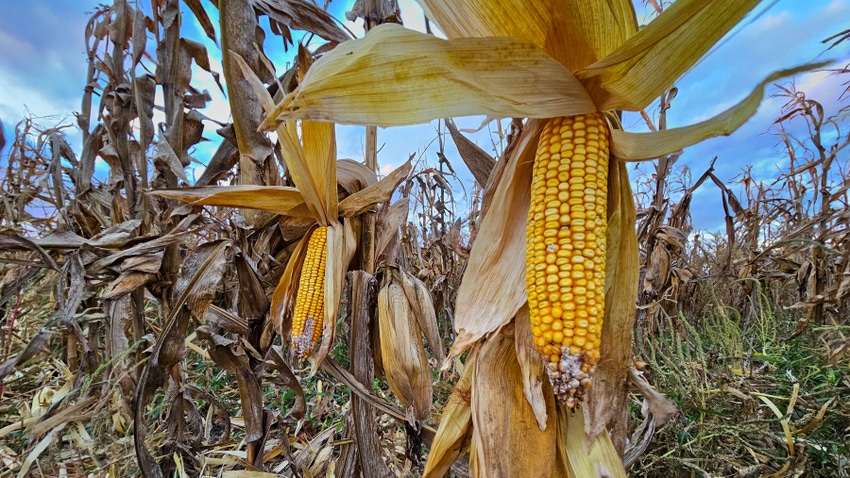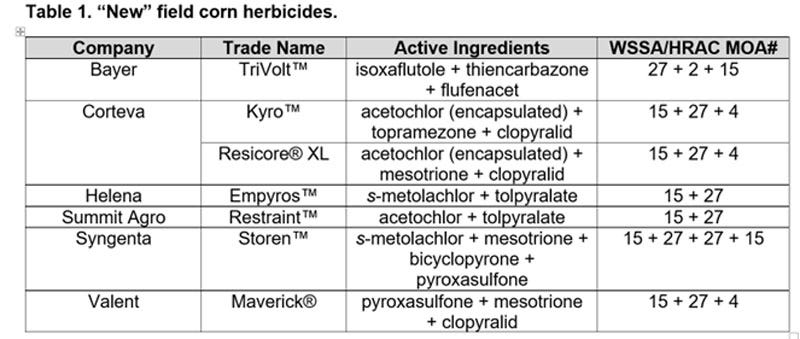December 15, 2023

In 1988 as a young, dark-haired, and wide-eyed weed science MS graduate student, I was fortunate to see a very popular I-state Extension weed specialist deliver a talk entitled “Premix: Fix or Nix or 'Can ’em and Confuse 'em.'”
The meeting room was overflowing because the speaker was hilarious and captivating. His general message was “Are herbicide pre-mixes just an industry game of hide and seek or a means to get farmers to use multiple modes of action (MOA)?” Either way, herbicide pre-mixes are still very popular today.

Graphic by Eric Prostko
Recently, I have been asked about various “new” herbicides available for use in field corn. I have listed some of these in Table 1 and have conducted a few field trials with most but not all. I feel the need to set the record straight though. Although these may be “new” herbicide pre-mixes, they do not contain “new” modes of action. All of the active ingredients in these pre-mixes have been around for a few years. There has not been a new herbicide MOA discovered for use in field corn since ~1977 (HPPD-inhibitors). I have heard Holy Grail-like rumors of a new MOA discovered/developed by FMC but I have not yet seen, tasted, or touched it.
What I can tell you about these pre-mixes is that all have performed very well in my field trials. Results have been comparable to current standards but not significantly better. When you have multiple active ingredients in a mix, something is going to work. I would still like to see all of these products used in a program with atrazine. In my 37-year weed science career, atrazine has always made everything just a little bit better for a very reasonable cost/A.
As with most “new” products, these pre-mixes were originally developed for the I-State field corn market (~29 million acres harvested in 2023) not for the Deep South market (~0.8 million acres harvested in 2023). Thus, interested southern field corners need to pay close attention to their labels, application rates, and crop rotation restrictions if tried.

Graphic by Eric Prostko
There are advantages and disadvantages to using herbicide pre-mixes in field corn. Everything you need is in 1 jug, thus it’s easier to measure and mix. This can be very helpful for preventing human errors. Furthermore, pre-mixes guarantee the use of multiple herbicide MOA’s, which is one strategy growers can use to help delay the future evolution of resistance. On the flip side, the ratio of active ingredients in a pre-mix may not be ideal for every situation. Also, there could be some price differences in a pre-mix formulation in comparison to making your own.
If it ain’t broke, don’t fix it! However, I am all for trying new stuff out when things are broken. Ultimately, the choice is all yours if you desire to use an herbicide pre-mix in field corn, or simply make your own. As a friendly reminder, new products should only be used on a limited basis until they are proven under local conditions.
As always, good weed hunting!
Read more about:
HerbicideAbout the Author(s)
You May Also Like






